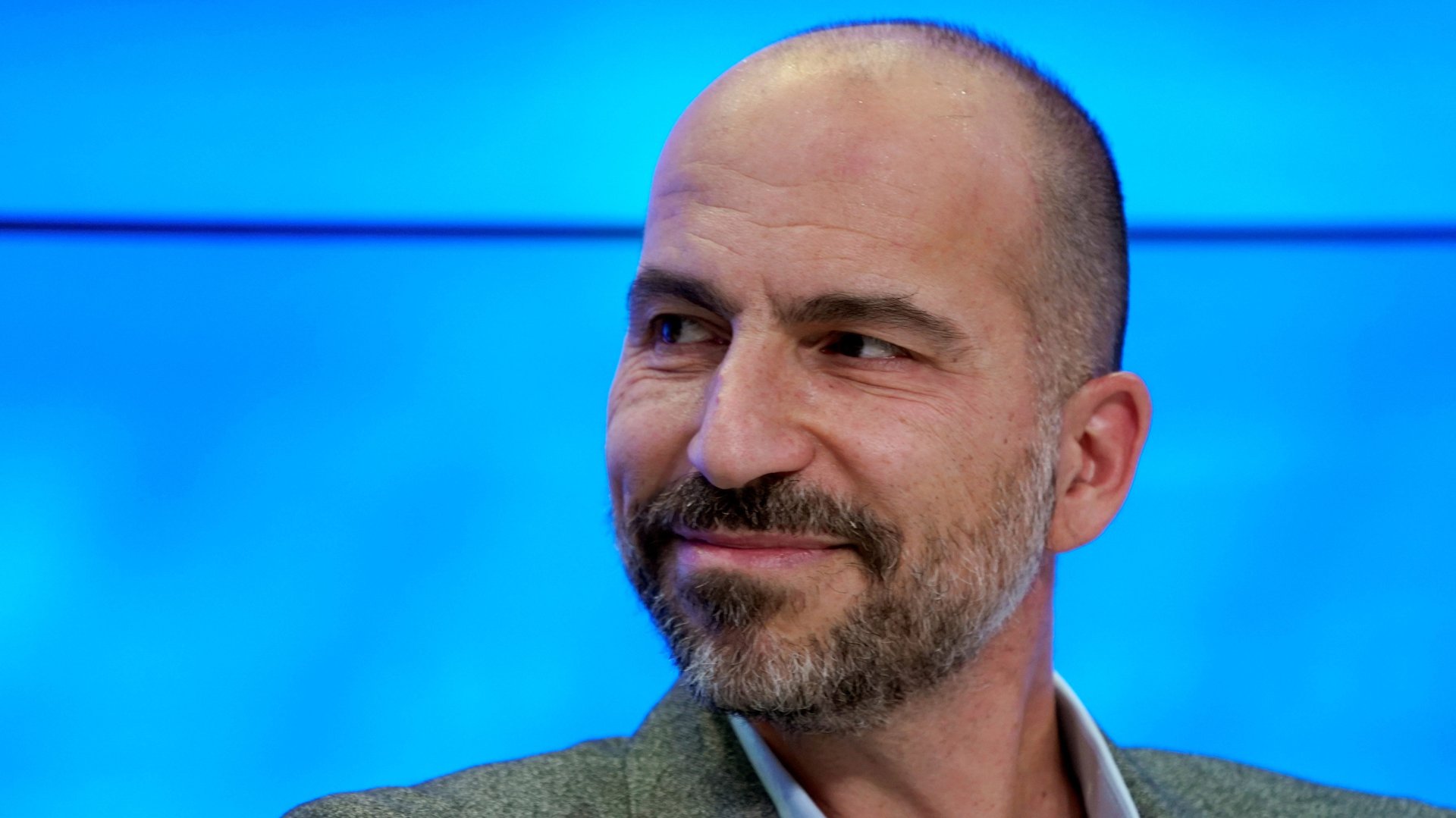Uber CEO: Getting people to share rides is a “battle” against “societal norms”
Uber thinks shared rides are key to its future, but getting people to want to share is a “battle” against “societal norms,” Uber CEO Dara Khosrowshahi said Wednesday (April 11) at a panel event in Washington DC.


Uber thinks shared rides are key to its future, but getting people to want to share is a “battle” against “societal norms,” Uber CEO Dara Khosrowshahi said Wednesday (April 11) at a panel event in Washington DC.
The ride-hailing company is investing heavily in shared-rides service UberPool and Express Pool, a recently launched version of Pool that asks customers to walk to a better pickup spot along their route in exchange for a steep discount. Uber’s spending on subsidies for Express Pool, which launched in February and is available in eight US cities, including DC, amounts to “hundreds of millions of dollars a year,” Khosrowshahi said. Express Pool can be 50% cheaper than regular UberPool and 75% less than a private ride.
“What we’re finding is that there are these societal norms that we have to battle,” he said. “People are used to you go on the metro, it’s a shared ride, you’re going to be with a bunch of other people. It doesn’t feel weird. You go on the bus, it doesn’t feel weird. You share a car with someone else, and it kind of feels a little weird.”
Uber achieved a $70 billion valuation and became a household name by making private rides available at the touch of a smartphone button. But the company has lately downplayed private rides and focused instead on becoming a comprehensive transit hub. The shift began under Uber co-founder Travis Kalanick and has accelerated significantly since Khosrowshahi took over the CEO job last August, after Kalanick was ousted in a messy power struggle.
The company is now striking deals to bring alternative modes of transportation onto its platform immediately. Uber said Wednesday that it will make car rentals available from its app later this month in San Francisco through a partnership with car-sharing startup Getaround. It’s also partnering with Masabi, a London-based mobile ticketing company, to help customers book and use public transit tickets within the Uber app. Earlier this week, Uber announced its acquisition of Jump Bikes, a provider of dockless electric bicycles that will now also be accessible from the Uber app.
Shared rides are central to Uber’s vision for its future, in part because Pool in theory should improve margins on rides by putting more people into each car. But despite its roots in the so-called sharing economy, Uber has had to “discount very aggressively” to get people to try shared rides, Khosrowshahi said. In San Francisco, where nearly half of Uber rides taken during rush hour are now shared, the company at one point was spending $1 million a week on discounts, BuzzFeed reported last year.
“The combination of the societal norms and then the question of, ‘when exactly am I going to get there?’ are real friction points that we have had to fight, and that’s why we are investing very heavily in this mode of transport,” Khosrowshahi said. Shared rides are generally slower than private ones, because the routes are less direct and involve more stops.
Read Khosrowshahi’s full comments on shared rides below:
We’re investing hundreds of millions of dollars a year in our Express Pool product, and what we’re finding is that there are these societal norms that we have to battle. People are used to you go on the metro, it’s a shared ride, you’re going to be with a bunch of other people. It doesn’t feel weird. You go on the bus, it doesn’t feel weird. You share a car with someone else, and it kind of feels a little weird. Are you supposed to talk to them, what do you say, can you do work, can you talk on your phone, et cetera.
So, we are having to discount very aggressively—much more so than you would think—shared ride and Express Pool rides to get people to want to try this new mode of transportation that we think should be a much, much bigger mode of transportation. And the more people share the more powerful it becomes. The economics become more powerful, et cetera. And the combination of the societal norms and then the question of, when exactly am I going to get there, are real friction points that we have had to fight, and that’s why we are investing very heavily in this mode of transport.
And we’re seeing incredibly encouraging results in certain cities. In San Francisco, our headquarters, almost 50% of our rides during rush hour are shared. So it can happen, but it requires sustained investment. It requires big investment. And it’s something that we’re very much behind.